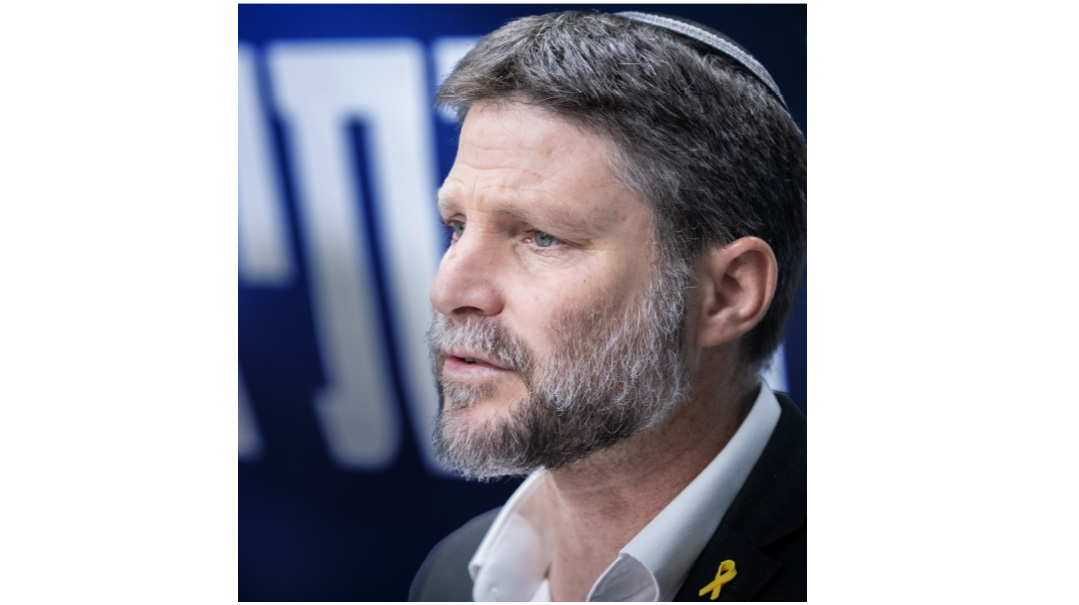Atah Kadosh: Who’s in Charge?

Holiness is the ability to be involved yet remain aloof

“A
tah Kadosh,” the final bircas shevach of the Shemoneh Esreh, presents a distinct challenge to kavanah. Praising Hashem for His eternal giving and goodness, for extending the privileges due the Avos to our generation, or for His promise to revive the dead, feels relevant and relatable. But Hashem’s kedushah is elusive and difficult to define, which makes kavanah in this brachah challenging.
How do we understand Hashem’s kedushah? Is there an equivalent paradigm for kedushah in humans?
We find a prototype for the word kadosh in Sefer Vayikra (19:2): “Kedoshim tiheyu ki kadosh ani Hashem Elokeichem.” Here, Hashem exhorts us to be kadosh because He Himself is kadosh. The Ramban (ibid), drawing from the Toras Kohanim, offers a classic explanation for kedushah: “Perushim tiheyu — be separate.” He continues, “Just as I am kadosh, so too shall you be kadosh, just as I am parush, so too shall you be parush (ibid).”
Hashem exists in a realm entirely inaccessible to humans. It follows that His attribute of kedushah is equally remote. How does His kedushah obligate me, a mere mortal?
The continuation of the Ramban only intensifies the question. He explains that the Torah warns us to abstain from prohibited relationships and forbidden food, yet also sanctions permissible relationships and consumption of permitted food and drink.
An unscrupulous individual may see this as a carte blanche to overindulge in all forms of permissible behavior and become a “naval b’reshus haTorah” — disgusting, yet permitted by the Torah. Therefore, the Torah issues a caveat: Maintain kedushah! Retain a healthy separation from these potential vices and indulge only on a necessary basis.
“Kedoshim tiheyu ki kadosh ani Hashem Elokeichem.” The Ramban’s definition of kedushah, regulating our engagement in permitted pleasures to prevent overindulging, is entirely inapplicable to Hashem. He doesn’t struggle with reining in physical excesses with overindulging. How is He the template for kedushah, separation?
Involved Yet Aloof
Philosophers of yore posited that a divine being created the world and effectively abandoned it to operate independently. It is axiomatic to a believing Jew that Hashem not only created the world, but is intimately engaged in its moment-to-moment functioning. Every ocean wave, blade of grass, and strand of DNA is subject to His supervision, and ultimately, their destiny is determined by Him. And yet, despite His immersive involvement in our world, Hashem is entirely removed from it. He is not a physical being, and therefore, He is not influenced or affected by the world. He is unequivocally separate. He is kadosh.
“V’shimcha kadosh” — and His very name is separate. Hashem is known singularly through His interactions with our world — we access Him on a very limited basis, in the way He chooses to reveal Himself. Like the parable of an iceberg whose bulk is submerged underwater, Hashem’s true essence is predominantly concealed, inaccessible to creatures of flesh and blood. A name indicates mahus — essence, and Hashem’s name is kadosh, which indicates his separateness from this world.
He is immersed, yet apart. Involved, yet unattached.
And this is our model for kedushah as well. Rav Zev Leff explains in the name of Rav Mordechai Gifter, that genuine kedushah is the ability to engage in our physical world without losing ourselves in it — to be involved and yet remain aloof.
And indeed, this approach is substantiated by an alternate translation of kedushah: designated. Hekdesh, which shares its root with kadosh, refers to physical entities that have been designated for service of Hashem. A common example is tzedakah money, which is hekdesh — allocated specifically for mitzvah performance and not allowed to be used for other purposes. Interfacing with this world as a kadosh entails designating my involvement in it, as a means to serve Hashem.
Emulating Hashem’s kedushah doesn’t mean eschewing all physicality, but it does expect my material interests to be informed by kedushah. I can be involved in clothing and food, décor and aesthetics, but must maintain enough separateness to ensure they don’t drown me. I can maintain a deep appreciation for color, texture, and flavor, yet channel my admiration for these mediums by designating them for Hashem.
Our finest clothing is designated for Shabbos, our most sumptuous meals are prepared for Yom Tov. We invest our aesthetic flair in organizing a sheva brachos seudah or preparing a trousseau for a needy kallah. And through it all, we are issued a gentle reminder, “Don’t drown in it! Maintain a healthy emotional distance.”
Perhaps that is a way to understand the incompatibility of a Torah lifestyle with the concept of endeavors “for their own sake.” Art for art’s sake. Beauty for the sake of beauty. Winning for the sake of winning. Money for money’s sake. These concepts diverge sharply from the kedushah imperative. Artistic expression is a means to express the beauty in Hashem’s world, to adorn our holy spaces, to provide a physical expression for a spiritual idea. Money is a deposit from on high, meant to invest in pursuits that generate an eternal ROI. However, never ever is their purpose self-fulfilling.
The dueling interests represented by the kedushah imperative are as old as mankind.
Winner Takes All
The Ramchal (Derech Hashem 1:3) explains that Hashem determined man be formed from two opposing forces, a sublime neshamah and an earthly guf (body). Each half of our being maintains an inner compulsion to follow its bidding. The neshamah is enticed by spiritual pursuits, and the guf is lured toward physical endeavors. This paradox sets the stage for an all-out war between the two halves of our being. However, in this war, its winner takes all.
If the neshamah is successful in pursuing spirituality, not only does she increase in purity, but she literally drags the guf along with her. “She [the neshamah] is elevated, and the guf is elevated along with her, [resulting in] a more perfected person” (ibid).
Unfortunately, the converse is true as well. If a person allows his guf to triumph over his neshamah and chase physicality, both guf and neshamah are sullied in the process. “And this person will be unfit for, and deterred from, true perfection” (ibid).
This theater of war is the basis for our existence. Our choices determine whether our neshamah drags a captive guf toward spiritual bliss, or whether our guf marches into a physical minefield with our neshamah a feckless prisoner of war.
At every crossroads we encounter, in every decision we make, we must first and foremost determine: Who is in charge right now? Is my neshamah in the driver’s seat, conveying my guf to its next destination? Or is my guf currently holding the wheel, driving away with my neshamah in tow?
And this is the fundamental principle in kedushah as well. When my neshamah is in charge, for all my involvement in the physical world, I remain apart, merely dipping in my toes to accomplish a greater goal. I am a kadosh. However, if my guf is leading, my immersion in physicality will most likely drown me.
Atah kadosh v’shimcha kadosh. Hashem’s unfathomable kedushah is indeed the ultimate template for us to appreciate our capacity for kedushah as well.
Mrs. Elana Moskowitz has been teaching in seminaries for over twenty years.
(Originally featured in Family First, Issue 802)
Oops! We could not locate your form.




